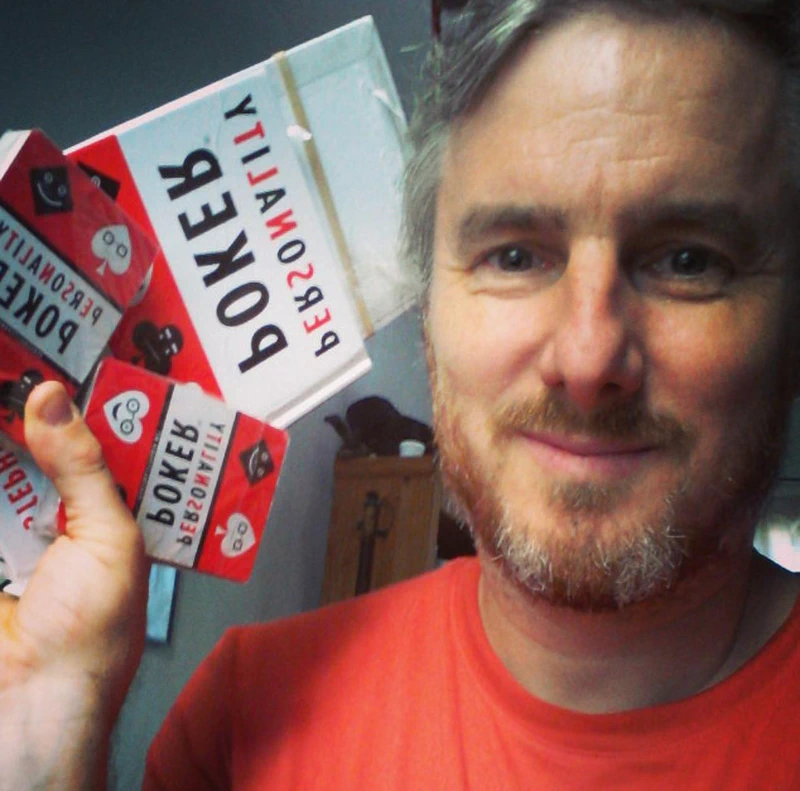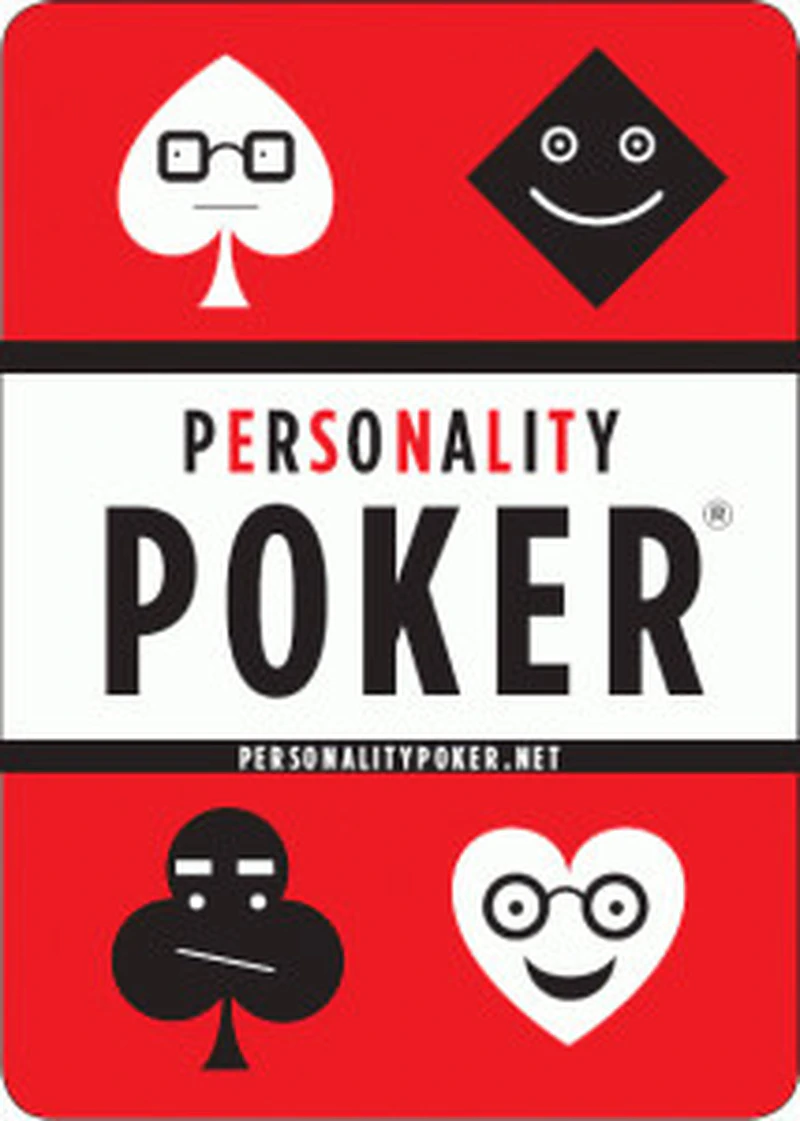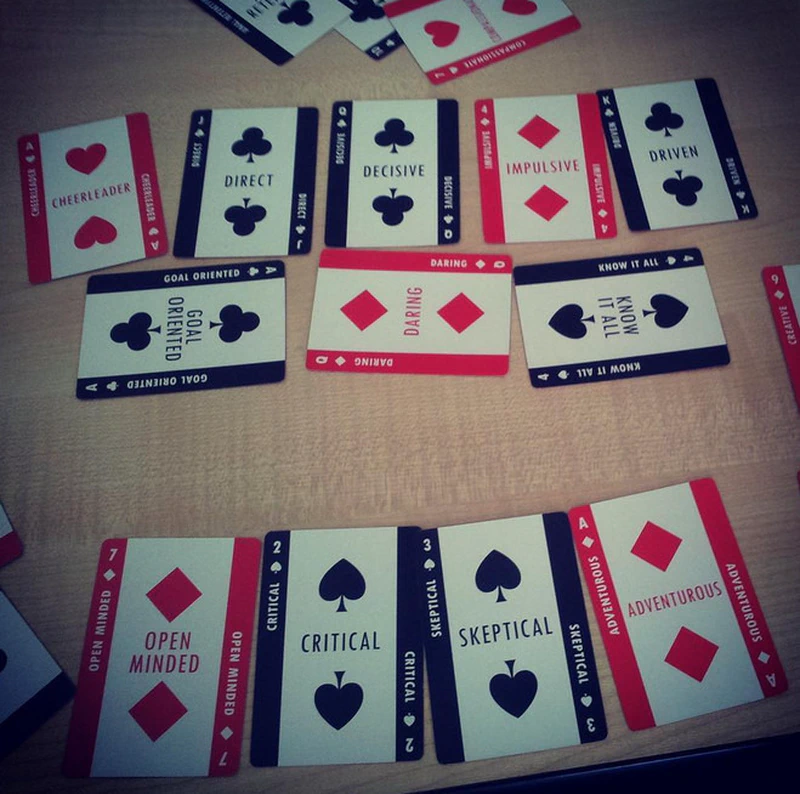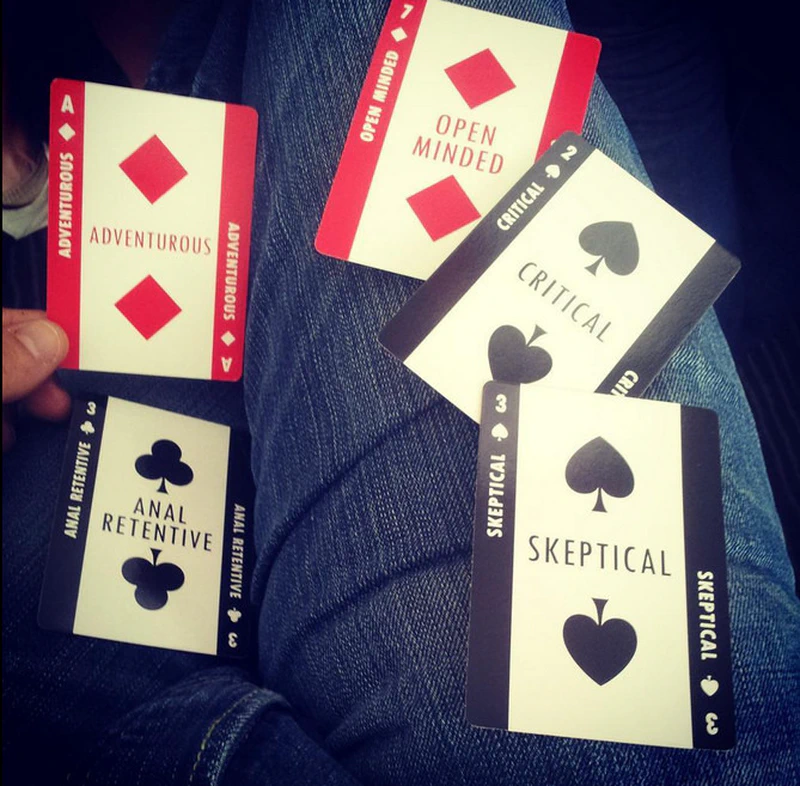Here’s also a little game that Olaf Lewitz introduced me to this summer during ALE2014. Yet another derivative of MBTI, Process Com, and the like, a card game that allows you to learn more about yourself, and perhaps about the image you project to others. Be careful, all these personality approaches are very presumptuous and should be used with great caution: it’s not with a card game that you learn a lot about people. But as always, it allows you to open up discussion, to create a space for improvement, for feedback.

Personally I use it very lightly (it’s a card game after all), and simply to start a conversation. Personality Poker is a game by Stephen Shapiro (from 2010), which he used extensively at… Accenture (silence, awkward pause,… ok let’s continue). The game comes with a book that provides detailed explanations. I recommend 1 game for 3/4 people, 2 games for 7/8, 3 games for 9/11 people, etc.
When to use it?
During team retrospectives, during regular meetings with colleagues or your hierarchical superior, in job interviews (I remind you: for the latter, in a relaxed manner if possible!), finally at the bar with someone you’re attracted to.
How to use it alone?

Alone or with an interlocutor who facilitates the discussion, you make 4 piles:
- Something I naturally recognize myself in, without effort.
- Something I recognize myself in, but in the evening I perceive the efforts I had to make.
- Something I’m not and would like to be.
- Something I’m not and don’t want to be.
The 4 piles should end up being equal in size: you have to force yourself to balance them (this forces you to ask yourself the right questions). Then you can ask yourself:
The person is surprised to discover certain cards in the first pile: explain to them, help them discover this aspect of your personality. Perhaps this will lead to reconsidering certain cards.
Try to better align your activity with what you are, without effort.
The person is there to help you develop, take a card from the third pile, and discuss how to improve yourself on this point.
Etc.
How to use it in a group?
Everyone receives five cards, you ask each person to arrange the cards from left to right according to the 4 categories mentioned above. The benefit is spending time on this phase, people need to question themselves. Then you can allow people to blindly exchange (I give you 2 cards, you give me 2) the cards they don’t relate to (category 3 and 4). Again, the important thing is to give time for reflection because ultimately you’re going to suggest exchanging the cards they don’t relate to with the pile you’ve kept. A bit later (not too long either!) you ask them to finally only keep the cards they recognize themselves in, without effort (category 1). You can offer all the remaining cards visible and available (people will understand that the first phase only served to push them to question themselves more strongly).
When everyone feels good with their five cards: reveal them in front of yourself.
Warning, here’s one last action that can prove fascinating but dangerous: ask others to place cards in front of you that correspond to you (maximum five, no minimum). You therefore end up with your five cards (your analysis of yourself) and potentially zero to five cards from the other participants.
This is the beginning of explanations and dialogues. You can repeat the dialogues mentioned in the “alone” section. Otherwise you can start reading broadly some analyses (nonsense according to some).
Some broad analyses
Cards 2 to 4 rather represent flaws. They’re needed. How to be someone recognized for their knowledge (knowledgeable), without sometimes coming across as a “know it all” (know it all, a 4 of spades). I’d say flaws are good, they explain the qualities. But there’s no obligation to have them.
Cards 5 to 10 are rather characteristics not necessarily visible (intra), you are but people might not know it. Conversely, face cards from jack to ace are visible characteristics (extra), known to all. You can be “open-minded” (openminded), it’s something internalized, not necessarily visible, but you’re also adventurous (adventurous), and people see that, they see you trying all these somewhat risky things.
Naturally each suit has its meaning: spades are analytical people, about facts, data, they dig into facts. Clubs are associated with people of action: they plan and trigger, make ideas work. Diamonds are the innovators, those who think differently, who bring a different vision. Finally, hearts are the binders, the glue in teams, people who take care of people.
And ideally you don’t start a team, a company without a spade who knows what they’re talking about, a club who will action ideas, a diamond who will be able to introduce innovation, difference, and a heart who provides the glue between all these people.
Naturally you can have a large proportion of one suit, or offer a panel of different suits. There’s no better, no best. It’s the combination with others that gives full meaning to your alloy.
My first “personality poker”

Without knowing the rules, at the bottom my selection, at the top, what was attributed to me.
Some false friends in translations
Watch out for some false friends:
- Versatile: it’s polyvalent in French (and yes, it’s a jack!)
- Gregarious: it’s fiable in French, you can rely on them to build teams.
- Bossy: nothing to do with work, it’s “petit chef”!
Some counter-intuitive or complicated translations

- Anal retentive: don’t be frightened, it’s just “coincé du cul”.
- Boisterous: exubérant.
- Scattered: dispersé.
And have fun, because it’s only a game!